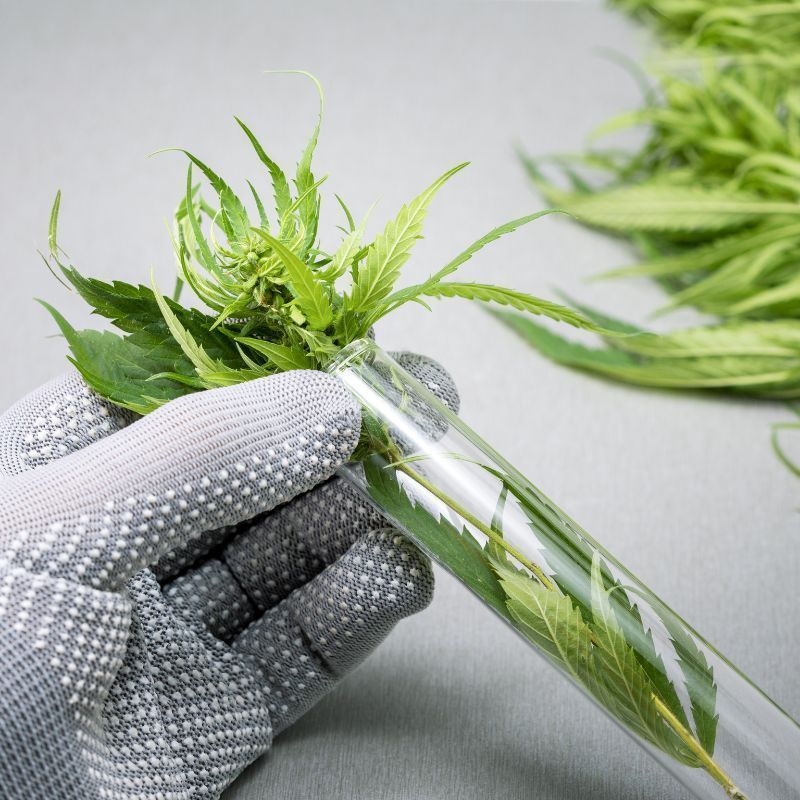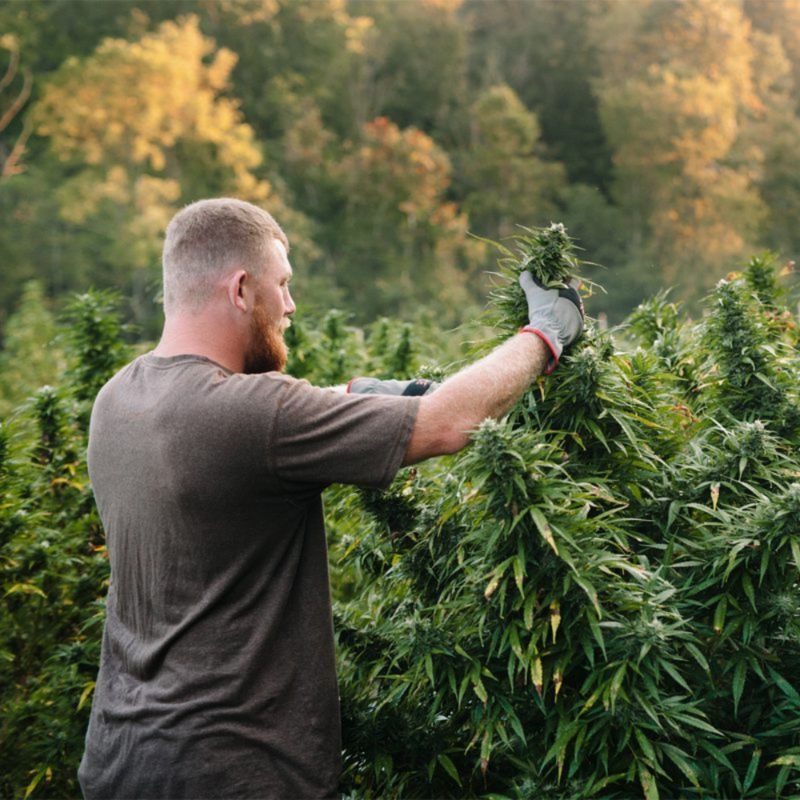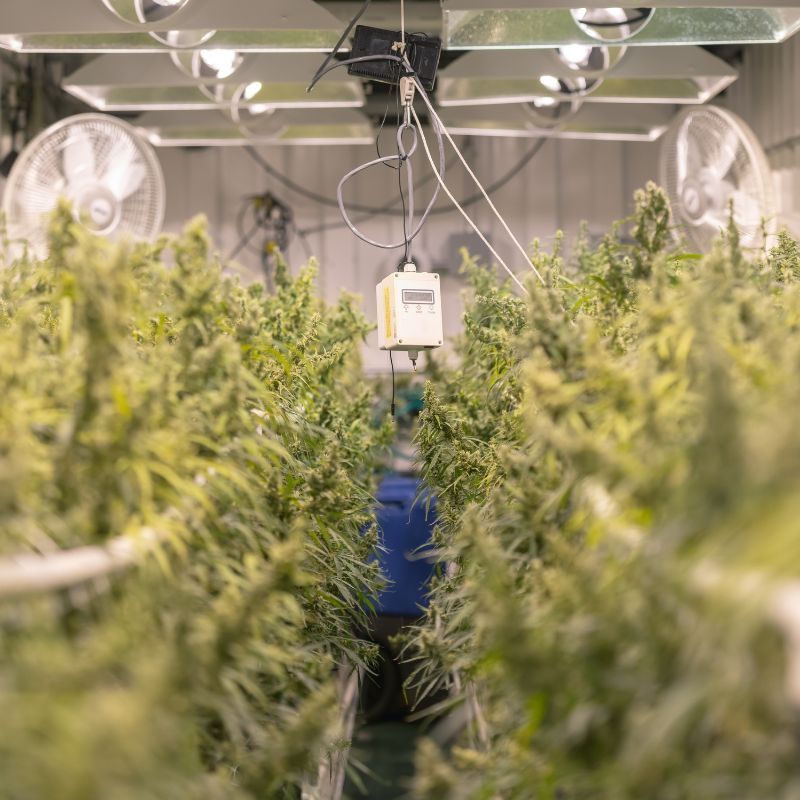As the cannabis industry continues to grow and evolve, the need for specialized insurance coverage becomes increasingly important. In Alaska, where cannabis has been legalized for both medical and recreational use, understanding the nuances of cannabis insurance is essential for business owners. This guide aims to provide a comprehensive overview of Alaska cannabis insurance, including its importance, types of coverage available, and tips for selecting the right policy.
The Importance of Cannabis Insurance in Alaska
Operating a cannabis business in Alaska presents unique challenges and risks. From cultivation to retail sales, each aspect of the cannabis supply chain is subject to various regulations and potential liabilities. Without adequate insurance coverage, business owners may find themselves vulnerable to financial losses due to unforeseen circumstances.
Legal and Regulatory Landscape
Alaska's cannabis laws are complex and ever-changing. The state's regulatory framework requires cannabis businesses to adhere to strict guidelines, and any violation can result in significant penalties. Insurance can help protect businesses from financial repercussions arising from legal issues, ensuring compliance with state regulations.
Furthermore, the federal status of cannabis remains a significant concern. While Alaska has legalized cannabis at the state level, businesses may still face challenges related to banking and federal regulations. Having the right insurance can provide a safety net in case of legal disputes or regulatory changes. This is particularly important in a state like Alaska, where the remote nature of many operations can complicate compliance and increase exposure to risks that might not be as prevalent in more urban areas.
Risk Management
Every business faces risks, but the cannabis industry is particularly susceptible to unique hazards. From crop failures and theft to product liability and employee injuries, the potential for loss is high. Insurance not only helps mitigate these risks but also provides peace of mind for business owners.
By investing in cannabis insurance, business owners can focus on growth and innovation without constantly worrying about potential pitfalls. This proactive approach to risk management is crucial for long-term success in the cannabis sector. Additionally, as the market continues to evolve, businesses that prioritize comprehensive insurance coverage can better navigate fluctuations in demand and shifts in consumer preferences. This adaptability not only enhances operational resilience but also positions businesses to seize new opportunities as they arise, such as expanding product lines or entering new markets.
Moreover, the cultivation process itself is fraught with challenges that can lead to significant financial setbacks. For instance, adverse weather conditions, pests, and diseases can devastate crops, leading to substantial losses. Insurance coverage tailored to the cannabis industry can specifically address these agricultural risks, providing growers with the necessary support to recover and continue operations. By understanding these risks and securing appropriate coverage, cannabis entrepreneurs can safeguard their investments and contribute to the overall stability of Alaska's burgeoning cannabis market.
Types of Cannabis Insurance Coverage
Understanding the different types of insurance coverage available is vital for cannabis business owners in Alaska. Each type of coverage addresses specific risks associated with the cannabis industry. Here are some of the most common types of cannabis insurance:
General Liability Insurance
General liability insurance is essential for any business, including those in the cannabis sector. This coverage protects against third-party claims for bodily injury, property damage, and personal injury. For cannabis businesses, general liability insurance can cover incidents such as slip-and-fall accidents at a retail location or damage caused by product defects.
Having general liability insurance is not only a smart business decision but may also be a requirement for obtaining a cannabis business license in Alaska. This coverage provides a safety net that can help businesses navigate potential legal challenges. Additionally, it can enhance a company's reputation, as customers often feel more secure purchasing from businesses that are adequately insured, knowing that their interests are protected.
Property Insurance
Property insurance is crucial for cannabis businesses that own or lease physical locations. This coverage protects against losses due to theft, fire, vandalism, and natural disasters. Given the high value of cannabis products and equipment, property insurance can be a lifesaver in the event of a catastrophic loss.
Business owners should carefully assess their property insurance needs, considering factors such as the value of inventory, equipment, and the physical space itself. Tailoring the policy to fit the specific risks associated with the cannabis industry can provide comprehensive protection. Furthermore, many insurers offer specialized coverage options that can address unique challenges faced by cannabis businesses, such as coverage for specialized grow equipment or security systems designed to prevent theft.
Product Liability Insurance
Product liability insurance is particularly important for cannabis businesses that manufacture or sell products. This coverage protects against claims related to product defects, contamination, or adverse effects experienced by consumers. In an industry where product safety is paramount, having this insurance can safeguard against costly lawsuits.
Businesses should ensure that their product liability insurance covers all aspects of their operations, including cultivation, processing, and retail sales. This comprehensive approach helps mitigate risks associated with the entire supply chain. Additionally, as regulations evolve and consumer expectations increase, maintaining robust product liability coverage can also serve as a competitive advantage, showcasing a commitment to quality and safety that resonates with discerning customers.

Choosing the Right Insurance Provider
Selecting the right insurance provider is a critical step for cannabis businesses in Alaska. Not all insurance companies are equipped to handle the unique needs of the cannabis industry, so it’s essential to do thorough research. Here are some factors to consider when choosing an insurance provider:
Experience in the Cannabis Industry
When evaluating potential insurance providers, look for companies with experience in the cannabis sector. An insurer that understands the specific risks and challenges faced by cannabis businesses will be better equipped to offer tailored coverage options. Experienced providers can also help navigate the complex regulatory landscape, ensuring compliance with state laws.
Additionally, consider seeking recommendations from other cannabis business owners or industry associations. Peer insights can provide valuable information about which insurers have a solid reputation in the market. Engaging with local cannabis trade shows or networking events can also yield firsthand accounts of insurers' performance, allowing you to make a more informed decision based on real experiences.
Coverage Options and Flexibility
Not all insurance policies are created equal. It’s crucial to choose a provider that offers a range of coverage options tailored to the cannabis industry. Flexibility in policy terms and coverage limits can make a significant difference in meeting the unique needs of a cannabis business.
Review the policy details carefully, ensuring that it covers all aspects of the business, including cultivation, manufacturing, distribution, and retail. A comprehensive policy can provide peace of mind and protect against unforeseen risks. Furthermore, inquire about additional endorsements or riders that can enhance your coverage, such as protection against product liability or business interruption, which are particularly relevant in the ever-evolving cannabis market.
Customer Service and Support
Excellent customer service is vital when dealing with insurance providers. Cannabis business owners should look for insurers that offer responsive support and assistance throughout the policy lifecycle. Whether it’s answering questions, processing claims, or providing guidance on risk management, having a supportive insurance partner can make a significant difference.
Consider reaching out to potential providers to gauge their responsiveness and willingness to assist. A strong relationship with an insurance provider can enhance the overall experience and ensure that businesses receive the support they need. Additionally, assess whether the insurer offers educational resources or risk management tools, as these can be invaluable in helping businesses mitigate risks and improve operational safety. Access to webinars, articles, or even one-on-one consultations can empower business owners to make informed decisions and foster a culture of compliance and safety within their operations.
Cost of Cannabis Insurance in Alaska
The cost of cannabis insurance can vary significantly based on several factors, including the type of coverage, the size of the business, and the specific risks involved. Understanding these factors can help business owners budget effectively for insurance expenses.
Factors Influencing Insurance Costs
Several factors influence the cost of cannabis insurance in Alaska. These include:
- Business Size: Larger businesses with more extensive operations may face higher premiums due to increased risks.
- Location: The geographical location of the business can impact insurance costs, as certain areas may be more prone to specific risks, such as theft or natural disasters.
- Coverage Limits: Higher coverage limits typically result in higher premiums. Business owners should carefully assess their coverage needs to find a balance between adequate protection and cost.
- Claims History: A history of claims can influence insurance costs. Businesses with a clean claims history may qualify for lower premiums.
Budgeting for Insurance
When budgeting for cannabis insurance, it’s essential to consider all potential costs associated with coverage. Business owners should obtain quotes from multiple providers to compare premiums and coverage options. This process can help identify the best value for the specific needs of the business.
Additionally, setting aside funds for potential increases in premiums over time is a wise strategy. As the cannabis industry continues to evolve, insurance costs may fluctuate, and being prepared can help businesses maintain adequate coverage without financial strain.
Another important aspect of budgeting for cannabis insurance is understanding the different types of policies available. For instance, general liability insurance protects against claims of bodily injury or property damage, while product liability insurance covers claims related to the products sold. Depending on the business model, owners may also need to consider specialized coverages, such as crop insurance for cultivators or equipment breakdown insurance for manufacturers, which can add complexity to the budgeting process.
Moreover, business owners should stay informed about the regulatory landscape affecting the cannabis industry in Alaska. Changes in laws or regulations can impact insurance requirements and costs. Engaging with industry associations or consulting with insurance professionals who specialize in cannabis can provide valuable insights and help businesses navigate these complexities effectively. This proactive approach not only aids in budgeting but also ensures that businesses are adequately protected against the unique challenges of the cannabis market.

Claims Process for Cannabis Insurance
Understanding the claims process is crucial for cannabis business owners. In the event of a loss, knowing how to navigate the claims process can make a significant difference in recovering losses quickly and efficiently.
Steps to File a Claim
Filing a claim typically involves several steps:
- Notify the Insurance Provider: As soon as a loss occurs, contact the insurance provider to report the incident. Provide all relevant details and documentation.
- Document the Loss: Thoroughly document the loss with photographs, receipts, and any other evidence that supports the claim. This documentation will be crucial during the claims process.
- Complete Claim Forms: Fill out any required claim forms accurately and completely. Ensure that all information is correct to avoid delays in processing.
- Follow Up: Stay in communication with the insurance provider throughout the claims process. Follow up regularly to check on the status of the claim and provide any additional information requested.
Tips for a Successful Claim
To increase the likelihood of a successful claim, consider the following tips:
- Be Honest: Always provide accurate and truthful information during the claims process. Misrepresentation can lead to claim denial.
- Keep Records: Maintain thorough records of all communications with the insurance provider, including dates, times, and the names of representatives spoken to.
- Seek Professional Help: If the claims process becomes overwhelming, consider seeking assistance from a professional, such as an insurance adjuster or attorney, who specializes in cannabis insurance.
Future Trends in Cannabis Insurance
The cannabis industry is continually evolving, and so is the insurance landscape. As more states legalize cannabis and the market expands, several trends are expected to shape the future of cannabis insurance in Alaska and beyond.
Increased Coverage Options
As the cannabis industry matures, insurance providers are likely to develop more specialized coverage options tailored to the unique needs of cannabis businesses. This could include innovative policies that address emerging risks, such as cybersecurity threats or environmental liabilities associated with cultivation.
Business owners should stay informed about new coverage options and consider adapting their insurance policies as the industry evolves. Being proactive in securing comprehensive coverage can provide a competitive advantage.
Regulatory Changes
The regulatory landscape surrounding cannabis is constantly changing. As states continue to refine their cannabis laws, insurance providers will need to adapt their policies to remain compliant. This may lead to increased collaboration between insurers and regulatory agencies to ensure that coverage aligns with evolving legal requirements.
Business owners should remain vigilant about regulatory changes and work closely with their insurance providers to ensure compliance. Staying informed can help mitigate risks associated with legal issues.
Emphasis on Risk Management
As the cannabis industry grows, there will likely be a greater emphasis on risk management practices. Insurance providers may begin to offer additional resources and support to help businesses identify and mitigate risks proactively. This could include risk assessments, training programs, and consulting services.
Implementing effective risk management strategies can not only reduce insurance costs but also enhance overall business operations. Business owners should prioritize risk management as a core component of their business strategy.
Conclusion
Navigating the world of cannabis insurance in Alaska can be complex, but understanding the importance of coverage, the types of policies available, and how to choose the right provider can empower business owners to make informed decisions. As the cannabis industry continues to evolve, staying proactive about insurance needs will be crucial for long-term success.
By investing in the right insurance coverage and adopting effective risk management strategies, cannabis businesses can protect themselves against potential losses and position themselves for growth in this dynamic industry. With the right knowledge and resources, Alaska's cannabis entrepreneurs can thrive in a competitive market while ensuring compliance and safeguarding their investments.

Article By: Deb Sculli
Cannabis Insurance Specialist
Contact Us
FAQS
Common Questions About Alaska Cannabis Insurance
Answers to the questions we hear most from cannabis business owners.
What is Alaska Cannabis Insurance?
Alaska Cannabis Insurance is a specialized policy that protects cannabis businesses in Alaska from risks like property damage, product liability, crop loss, and theft. It helps companies stay compliant while safeguarding their operations.
Do dispensaries need Alaska Cannabis Insurance?
Yes, dispensaries in Alaska should carry Alaska Cannabis Insurance to protect against lawsuits, customer injuries, or product claims. It also helps meet state regulatory requirements.
Does Alaska Cannabis Insurance cover cannabis crops?
Many Alaska Cannabis Insurance policies offer crop coverage, protecting plants against fire, theft, and certain equipment failures. This ensures cultivators don’t lose their investment during the growing cycle.
How much does Alaska Cannabis Insurance typically cost?
The cost of Alaska Cannabis Insurance depends on your business size, coverage type, and risk exposure. Premiums vary, but tailored plans are available for dispensaries, cultivators, and processors.
What types of businesses need Alaska Cannabis Insurance?
Dispensaries, growers, processors, and transport companies all benefit from Alaska Cannabis Insurance. Each sector faces unique risks, so policies are customized for specific operations.
How do I choose the right Alaska Cannabis Insurance provider?
The best provider for Alaska Cannabis Insurance is one with experience in the cannabis industry and knowledge of Alaska’s regulations. A specialized broker can help secure compliant and affordable coverage.
Businesses We Served
Cannabis Businesses We Protect
We served a large variety of cannabis businesses throughout the US













